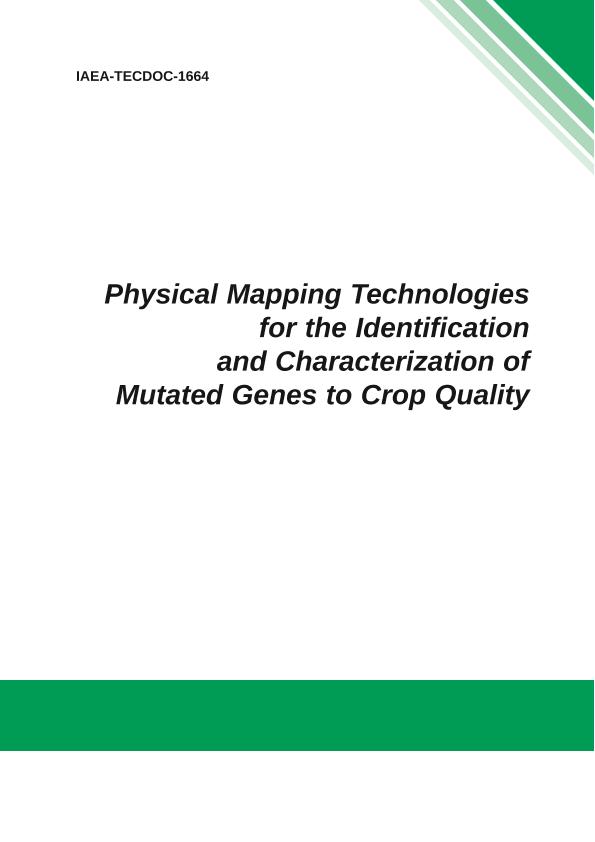Capítulo de Libro
Genomic characterization of the chili peppers (Capsicum, Solanaceae) germplasm by classical and molecular cytogenetics
Título del libro: Physical Mapping Technologies for the Identification and Characterization of Mutated Genes Contributing to Crop Quality
Moscone, Eduardo Alberto ; Scaldaferro, Marisel Analía
; Scaldaferro, Marisel Analía ; Grabiele, Mauro
; Grabiele, Mauro ; Romero, María Victoria
; Romero, María Victoria ; Debat, Humberto Julio
; Debat, Humberto Julio ; Seijo, José Guillermo
; Seijo, José Guillermo ; Acosta, María Cristina
; Acosta, María Cristina ; Daviña, Julio Rubén; Barboza, Gloria Estela
; Daviña, Julio Rubén; Barboza, Gloria Estela ; Ducasse, Daniel Adrián
; Ducasse, Daniel Adrián
 ; Scaldaferro, Marisel Analía
; Scaldaferro, Marisel Analía ; Grabiele, Mauro
; Grabiele, Mauro ; Romero, María Victoria
; Romero, María Victoria ; Debat, Humberto Julio
; Debat, Humberto Julio ; Seijo, José Guillermo
; Seijo, José Guillermo ; Acosta, María Cristina
; Acosta, María Cristina ; Daviña, Julio Rubén; Barboza, Gloria Estela
; Daviña, Julio Rubén; Barboza, Gloria Estela ; Ducasse, Daniel Adrián
; Ducasse, Daniel Adrián
Fecha de publicación:
2011
Editorial:
International Atomic Energy Agency
e-ISSN:
1011-4289
Idioma:
Inglés
Clasificación temática:
Resumen
Within the framework of the IAEA coordinated research project entitled ?Physical mapping technologies for the identification and characterization of mutated genes contributing to crop quality? we carried out genomic characterization of wild and cultivated samples of chilli peppers (genus Capsicum) by classical chromosome staining methods (AgNOR and fluorescent chromosome banding) and fluorescent in situ hybridization (FISH). For the first approach, fluorochromes with affinity for specific chromosome regions were used, i.e. chromomycin A3 (CMA) and diamidino-phenyl-indole (DAPI) which have preference for GC-rich and AT-rich regions, respectively. In addition, Ag-staining to detect active nucleolus organizing regions was applied. The heterochromatin could be characterized in respect to type, amount and distribution in the different accessions examined. On the other hand, the number and position of active NORs could be determined. Using FISH, different DNA probes were used in order to map specific sequences in the chromosomes, i.e. 45S and 5S rDNA, telomeric sequences and cloned restriction fragments of repetitive nature. As an example of the work done, we present the results obtained on a sample of Capsicum annuum var. annum (cultivar NMCA 10272), the most broadly exploited cultivar of chilli pepper. The results allowed us to characterize the Capsicum species and accessions and the possible evolutionary pathways for chilli peppers was deduced based on the available cytogenetic data. It is worth mentioning that the research work done under this CRP is part of work being done within an exsting network of chilli pepper research of this important plant group utilized by man and among one of the first cultivated plants in the history of humanity.
Archivos asociados
Licencia
Identificadores
Colecciones
Capítulos de libros(CCT - NORDESTE)
Capítulos de libros de CTRO.CIENTIFICO TECNOL.CONICET - NORDESTE
Capítulos de libros de CTRO.CIENTIFICO TECNOL.CONICET - NORDESTE
Capítulos de libros(IMBIV)
Capítulos de libros de INST.MULTIDISCIPL.DE BIOLOGIA VEGETAL (P)
Capítulos de libros de INST.MULTIDISCIPL.DE BIOLOGIA VEGETAL (P)
Citación
Moscone, Eduardo Alberto; Scaldaferro, Marisel Analía; Grabiele, Mauro; Romero, María Victoria; Debat, Humberto Julio; et al.; Genomic characterization of the chili peppers (Capsicum, Solanaceae) germplasm by classical and molecular cytogenetics; International Atomic Energy Agency ; 1664; 2011; 97-104
Compartir



